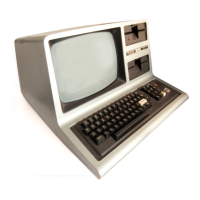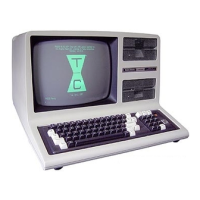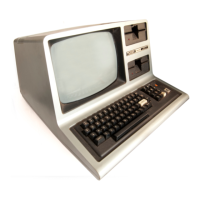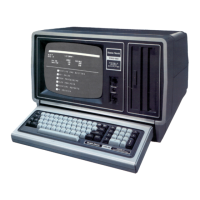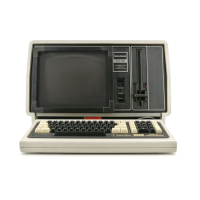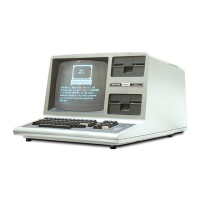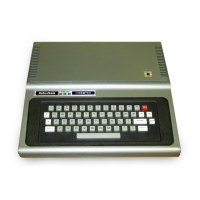VERSION 2.0 UPDATE
SYSTEM64 and SYSTEM32
Only
one
of
these
two
is needed in your system.
If
you have a
64K
RAM
system, keep
SYSTEM64
and delete
SYSTEM32;
if
you have a
32K
RAM
system, keep
SYSTEM32
and
delete
SYSTEM64.
We
will refer to the remaining file as SYSTEMnn.
nn
==
32
or
64, depending on
which one you kept.
SYSTEMnn
contains the high-memory routines for:
HOST,
SPOOL,
SETCOM
and all
serial110,
DO
and
DEBUG.
You should keep this file on your working master.
If
you
have an application which will not require any
of
the above-listed capabilities, you
may delete it.
HERZ50, LPII, PRTBKSP
These are Do-files
which
allow you to make specific changes
or'
'patches" to
systemfiles.
See
HERZ50,
LPn
and
PRTBKSP
for descriptions.
If
you
don't
need to
make any
of
these changes, you may delete these files from your working master.
Or
if
you do
need
to make them, delete them after they are used.
DOCOMnn, BASCOMnn, COMSUBnn, EXDATMnn,
DATMnn
(nn
=32 or 64)
These are demonstration programs and routines. See the descriptions elsewhere in
this manual (use the Index).
For
each
file, there is a
32K
RAM
and a
64K
RAM
version. You should keep the
version that matches
your
system's
RAM
size and delete the other.
These files are for demonstration and incidental purposes only. You may delete any
or
all
of
them
from
your
working master, depending upon your needs.
(Programmers should study
how
they work, to gain insights into techniques for
using
TRSDOS.)
4. Upgrade Diskettes from Previous Versions
(XFERSYS)
This section applies only to customers who have been using a previous version
of
TRSDOS.
New
customers may skip it.
All diskettes
~
,'system" and" data' , - must be converted before they can be
used underTRSDOS 2.0.
The
XFERSYS
utility program does this for you. Attempts to
use un-converted 1.2 diskettes under2.0 may destroy the information on the
diskettes.
See
XFERSYS
for the
proper
procedures to upgrading a diskette. Follow them
carefully!
39

